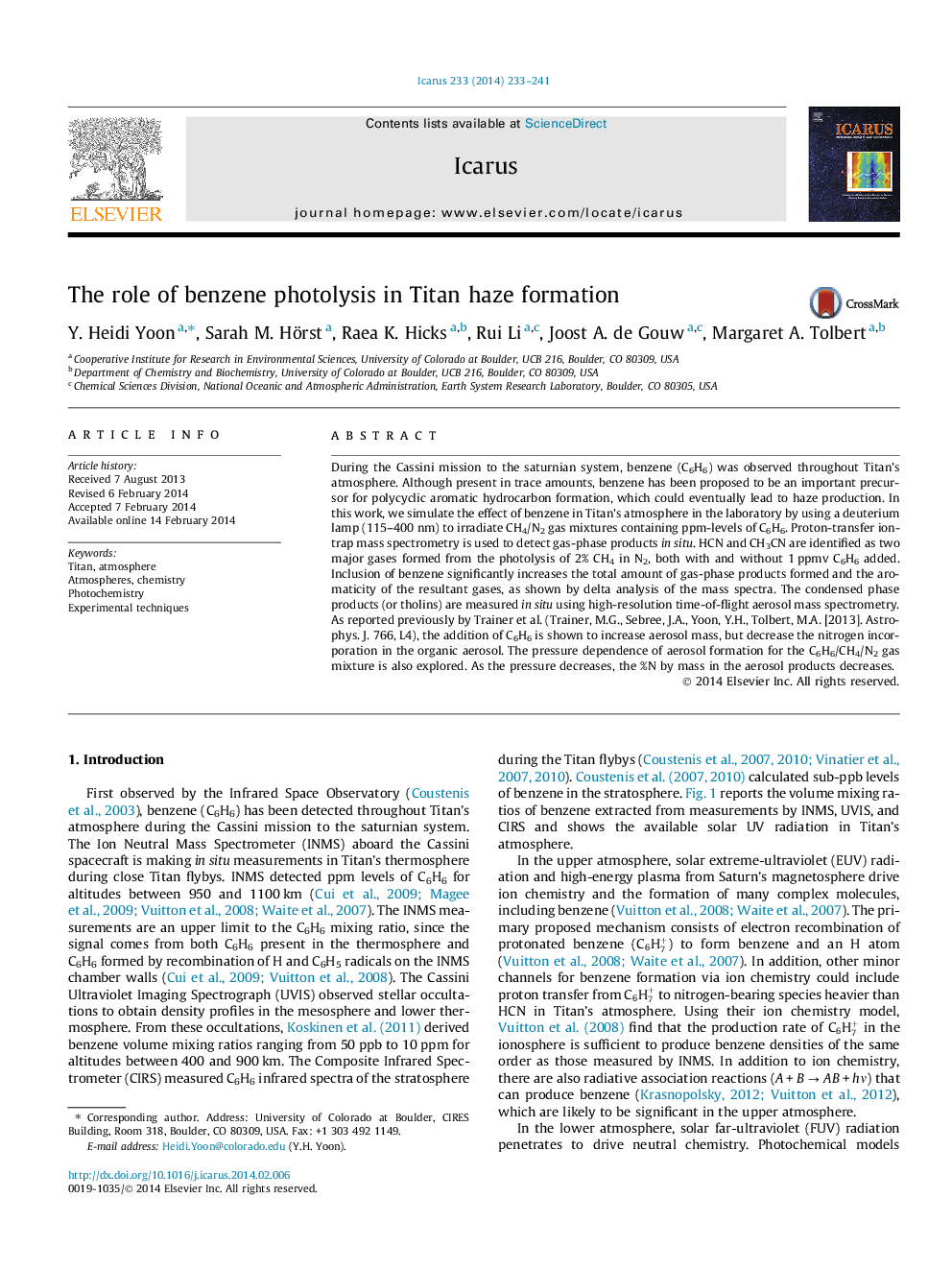| Article ID | Journal | Published Year | Pages | File Type |
|---|---|---|---|---|
| 8138364 | Icarus | 2014 | 9 Pages |
Abstract
During the Cassini mission to the saturnian system, benzene (C6H6) was observed throughout Titan's atmosphere. Although present in trace amounts, benzene has been proposed to be an important precursor for polycyclic aromatic hydrocarbon formation, which could eventually lead to haze production. In this work, we simulate the effect of benzene in Titan's atmosphere in the laboratory by using a deuterium lamp (115-400Â nm) to irradiate CH4/N2 gas mixtures containing ppm-levels of C6H6. Proton-transfer ion-trap mass spectrometry is used to detect gas-phase products in situ. HCN and CH3CN are identified as two major gases formed from the photolysis of 2% CH4 in N2, both with and without 1Â ppmv C6H6 added. Inclusion of benzene significantly increases the total amount of gas-phase products formed and the aromaticity of the resultant gases, as shown by delta analysis of the mass spectra. The condensed phase products (or tholins) are measured in situ using high-resolution time-of-flight aerosol mass spectrometry. As reported previously by Trainer et al. (Trainer, M.G., Sebree, J.A., Yoon, Y.H., Tolbert, M.A. [2013]. Astrophys. J. 766, L4), the addition of C6H6 is shown to increase aerosol mass, but decrease the nitrogen incorporation in the organic aerosol. The pressure dependence of aerosol formation for the C6H6/CH4/N2 gas mixture is also explored. As the pressure decreases, the %N by mass in the aerosol products decreases.
Related Topics
Physical Sciences and Engineering
Earth and Planetary Sciences
Space and Planetary Science
Authors
Y. Heidi Yoon, Sarah M. Hörst, Raea K. Hicks, Rui Li, Joost A. de Gouw, Margaret A. Tolbert,
